The following is an excerpt from Jordana Wright’s Cannabis for Creatives: How 32 Artists Enhance and Sustain Creativity
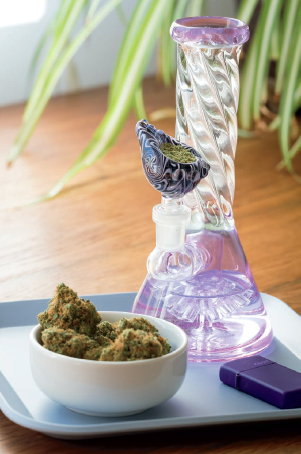
You might have already suspected just how individual the creative experience tends to be. As we’ve seen in the preceding interviews, no two artists are alike. The type of work artists create, the environments they require, the places they search for inspiration, and the methods they use to stay engaged and motivated: these variables are what makes them unique, giving their work impact and resonance. But the creative experience is fluid. Just as methods and values vary from artist to artist, techniques and processes adapt and change within an artist’s lifetime. Things that once worked before may not work again.
In cultivating our own creative environments, both physical and mental, we’ve all experienced the frustration of a fickle muse. When she doesn’t show up, we may push ourselves harder, or we may shut down. The path through requires work. After learning about such a beautifully varied collection of creators, you may feel inspired to explore some of the techniques that work for them. You may want to head over to the dispensary and start experimenting. Before you do, it will help to reflect on your own creative experiences thus far.
In his book The Mirror Thief, Martin Seay presented a statement that really resonated with me and my desire to study and understand creativity. He wrote, “The explorer who reaches a summit and curses to find another’s ice-axe already there is no explorer at all, but only a conqueror and a thug. Every worthwhile initiative is a collaboration, a conspiracy, a series of coded messages passed across the years from hand to anonymous hand.” We don’t develop our sense of creativity in a vacuum. There are always influences, be they social, chemical, or inspirational. We grow from the insights of others as we explore and reach new summits in our art. So, I invite you to join the conversation. Discover your own insights that will someday help you play a part in someone else’s creative investigations.
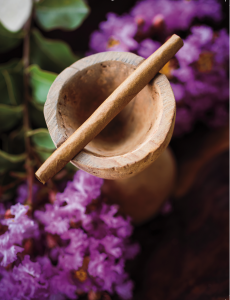
We don’t develop our sense of creativity in a vacuum. There are always influences, be they social, chemical, or inspirational. We grow from the insights of others as we explore and reach new summits in our art. So, I invite you to join the conversation. Discover your own insights that will someday help you play a part in someone else’s creative investigations.
To get the most out of the following section, I recommend starting a “Cannabis and Creativity” journal (or just a “Creativity” journal, if you’re not quite ready to experiment with pot). Personal reflections about our experiences can help guide us toward more actionable paths of creation. You are the next case study adding to this research. So, consider grabbing a notebook or starting a file on your computer to track your experiences, stoned or sober, creative or creatively frustrated, and everything in between.
Find Your Own Creative Goldilocks Zone
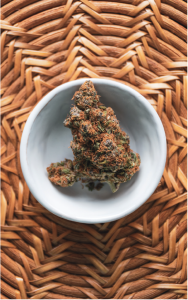
Finding the creative Goldilocks Zone is a vital piece of the puzzle. You may have already developed a system that seems to work for you. You may have put a great deal of thought into it, or you might approach it casually from a “what feels right, right now” perspective.
Regardless of how we’ve gotten there, we’ve all had a creative epiphany at some point in our lives. Think back to a time when you had a total “Aha!” moment. Maybe you came up with the perfect phrase for a poem or a song. Maybe you felt that undeniable impulse to physically create a painting or a recipe. Maybe you looked at the vista before you and just knew how to frame it into a photograph.
What did that look like for you? In each interview, I asked artists to tell me about their artistic journeys. Think back to your journey. Consider your earliest creative moments in childhood or the standout experiences in your life that helped you find a love for the act of creating. What were those experiences? What story would you tell me in an interview about your life as a creative and how you got to where you are today? How would you describe your current creative process? What creative rituals do you employ?
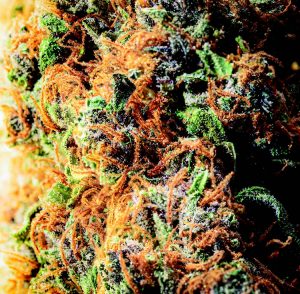 As you explore your history as a creative person, look for clues in your past processes that help you better understand your ideal creative Goldilocks Zone. Do you create better when you’re alone? Was your best creation related to the expansive imagination and lack of boundaries found in childhood? Do you feel more inspired by new places or familiar haunts? Is there a time of day that seems to call your creative energy forward? Are you inspired by bustling cities, or landscapes in the wilderness?
As you explore your history as a creative person, look for clues in your past processes that help you better understand your ideal creative Goldilocks Zone. Do you create better when you’re alone? Was your best creation related to the expansive imagination and lack of boundaries found in childhood? Do you feel more inspired by new places or familiar haunts? Is there a time of day that seems to call your creative energy forward? Are you inspired by bustling cities, or landscapes in the wilderness?
We’ve heard from artists who need music, who prefer to be energized by exercise, and some who need to work within a relaxed, meditative state. What has your creative Goldilocks Zone looked like in the past? How can you recapture those energies or grow from those prior experiences to help call your creativity forward in the future?
Write it all down. Every insight is a step toward more productive creativity.
Explore Your Past Cannabis Experiences
I’m fairly certain that you, the readers of this book, will cover the full spectrum of cannabis use, from those who’ve never tried it, to those who enjoy cannabis on an all-day everyday basis. Maybe it was more of a social thing in your youth but now, with all of the changing legislation, you’re curious about exploring pot again. Maybe psychoactive elements like THC are outside of your comfort zone, and you’re more interested in trying CBD.
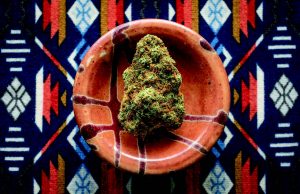 No matter your history of cannabis use, you don’t have to justify your comfort level or preferences to anyone. If you’re not interested in THC or even CBD, you’ll get no peer pressure from me. But if you have enjoyed pot in the past, or possibly tried it and not found it enjoyable, let’s dig a little deeper into your experiences.
No matter your history of cannabis use, you don’t have to justify your comfort level or preferences to anyone. If you’re not interested in THC or even CBD, you’ll get no peer pressure from me. But if you have enjoyed pot in the past, or possibly tried it and not found it enjoyable, let’s dig a little deeper into your experiences.
When did cannabis come into your life? How did you first experience it? Were you one of the many members of the population who didn’t really get high the first time around? Did you completely overdo it and fall asleep or get paranoid or eat a whole pizza in one sitting?
Explore your memories of cannabis in various eras of your life. If you used to take more pleasure in it than you do now, try to figure out what’s changed. Is it about your environment or how you imbibe? Is it a question of doing it alone versus with friends or at a party? Have you found more comfort and less paranoia in legalized areas? Does legality matter to you?Do you judge yourself for when, how, or why you choose to get high?
I’m not a psychologist, nor do I play one on TV, but I am a hyper-introspective person. High or clear minded, I’m always searching for the reasoning behind my emotions, behavior, successes, and failures. If your mind works this way, too, asking yourself these questions will feel fairly normal. If you’re a stranger to self-analysis, these pursuits may take a bit more work. It’s worth it. One common thread among all of the interviews you read in this book is that each of these artists and cannabis enthusiasts have personally explored their experiences in depth to better understand what effects cannabis has on their lives. These artists can refer to the cannabis high in terminology that best suits their experience because they’ve spent plenty of time thinking about it. Whether you call it a head change, a slight hum, a spirit flight, letting out the balloons, adding contrast, or something else, ask yourself:
• Do you believe cannabis makes you more creative?
• When or how did you discover that cannabis could affect your creative process?
• Do you imbibe when you tend to create or is it an occasional byproduct?
• Why do you think cannabis makes you more creative? Or, why don’t you?
• What does the cannabis-inspired creative energy feel like?
By answering these questions, you can start to draw out the similarities in your experiences, determine what beneficial results cannabis can have on your creative workflow, and hopefully harness some of these concepts to work toward more productive and sustainable cannabis-fueled creative experiences in the future.
Track Your Cannabis Experiences
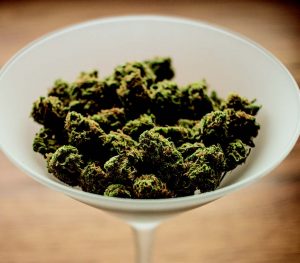 Having performed some reflective work on your past and present as a creative and/or cannabis enthusiast, your future experimentation with strains, methods of getting high, dosage, and terpene profiles will benefit from some organizational tracking. Because we’re still at least a few years away from actionable research in the genetics of cannabis and its related neurological effects on us, we’re all still in the same trial-and-error experimentation boat. Just like wine enthusiasts keep tasting notes about different vintages and expressions, cannabis lovers can keep our own records of what we experience. So, as you work your way through what the dispensary offers, consider keeping track of what you try and the experiences it inspires.
Having performed some reflective work on your past and present as a creative and/or cannabis enthusiast, your future experimentation with strains, methods of getting high, dosage, and terpene profiles will benefit from some organizational tracking. Because we’re still at least a few years away from actionable research in the genetics of cannabis and its related neurological effects on us, we’re all still in the same trial-and-error experimentation boat. Just like wine enthusiasts keep tasting notes about different vintages and expressions, cannabis lovers can keep our own records of what we experience. So, as you work your way through what the dispensary offers, consider keeping track of what you try and the experiences it inspires.
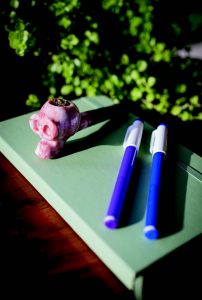 One quick disclaimer to note: cannabis is still federally illegal in the United States and many other countries around the world. The chances of the FBI or DEA knocking on your door and seizing your “Cannabis and Creativity” notebook to use against you are probably slim, but you might secretly be a modern-day Pablo Escobar or something, and I have no way of knowing. In any case, it’s generally a good idea to be as discreet as possible about what the Feds still consider use of an illegal drug. Maybe don’t leave your cannabis notes on your work computer. If you aren’t buying your pot in a legal dispensary, err on the side of not incriminating other people or yourself. I’m also not advising you to enjoy cannabis illegally. I hate that I have to say that, but here we are. Write a letter to your senator or the president. Donate money to advocacy groups. Vote. Someday, we’ll get to release a new edition of this book that will say on the very first page: “Hey, pot is legal in the US now! Good for us. We deserve it, so smoke it if you’ve got it.” That day is not today.
One quick disclaimer to note: cannabis is still federally illegal in the United States and many other countries around the world. The chances of the FBI or DEA knocking on your door and seizing your “Cannabis and Creativity” notebook to use against you are probably slim, but you might secretly be a modern-day Pablo Escobar or something, and I have no way of knowing. In any case, it’s generally a good idea to be as discreet as possible about what the Feds still consider use of an illegal drug. Maybe don’t leave your cannabis notes on your work computer. If you aren’t buying your pot in a legal dispensary, err on the side of not incriminating other people or yourself. I’m also not advising you to enjoy cannabis illegally. I hate that I have to say that, but here we are. Write a letter to your senator or the president. Donate money to advocacy groups. Vote. Someday, we’ll get to release a new edition of this book that will say on the very first page: “Hey, pot is legal in the US now! Good for us. We deserve it, so smoke it if you’ve got it.” That day is not today.
